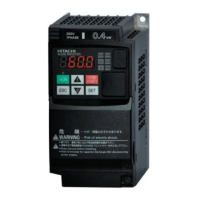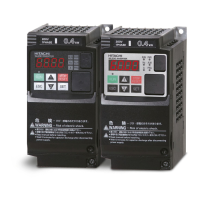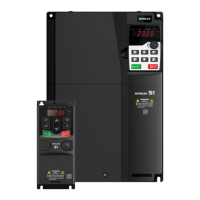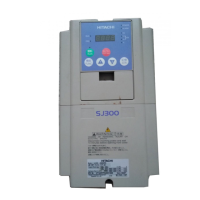Chapter 9 Inverter Functions
9-3-5
9.3.4 Changing the Acceleration/Deceleration Pattern
How to lessen the shock when there are sudden movements in elevators or conveyors that could
lead to the load collapsing?
How to lessen the shock when movement starts or stops?
How to change the acceleration gradient depending on winding or unwinding?
Custom acceleration and deceleration patterns can be set for each system.
The "Acceleration curve selection [A097]" and "Deceleration curve selection [A098]" allow
individual custom pattern settings to be used for both acceleration and deceleration.
When an acceleration/deceleration pattern is selected, the acceleration/deceleration time is set
from 0 Hz to the maximum frequency.
Acceleration curve
selection
The acceleration pattern is a linear.
The acceleration pattern is an S-curve.
The acceleration pattern is a U-curve.
The acceleration pattern is a reverse U-curve.
The acceleration pattern is an EL-S-curve.
Deceleration curve
selection
Used to select the curve pattern deceleration. The
same patterns used for acceleration are available.
Acceleration curve
constant
Sets the degree of curvature (how much it deviates
from a straight line) for S-curve, U-curve, and reverse
U-curve.
Deceleration curve
constant
EL-S-curve ratio at start of
acceleration
Specifies the curvature of curved sections when using
the EL-S-curve.
(For acceleration)
EL-S-curve ratio at end of
acceleration
EL-S-curve ratio at start of
deceleration
Specifies the curvature of curved sections when using
the EL-S-curve.
(For deceleration)
EL-S-curve ratio at end of
deceleration
Types of acceleration/deceleration curve patterns and examples of their applications
Providing linear
acceleration/
deceleration up to
the frequency
setting value.
Effective in
preventing the
collapse of cargo
on equipment such
as elevators and
conveyors.
Effective for controlling the tension of
equipment such as winders and
preventing the wound material from
breaking. It is also suitable for one-shot
take-up and unwinding.
Provides shock-less
starting and
stopping. It is
similar to the S-
curve, but the
middle section is
linear. Effective
applications such
as elevators.

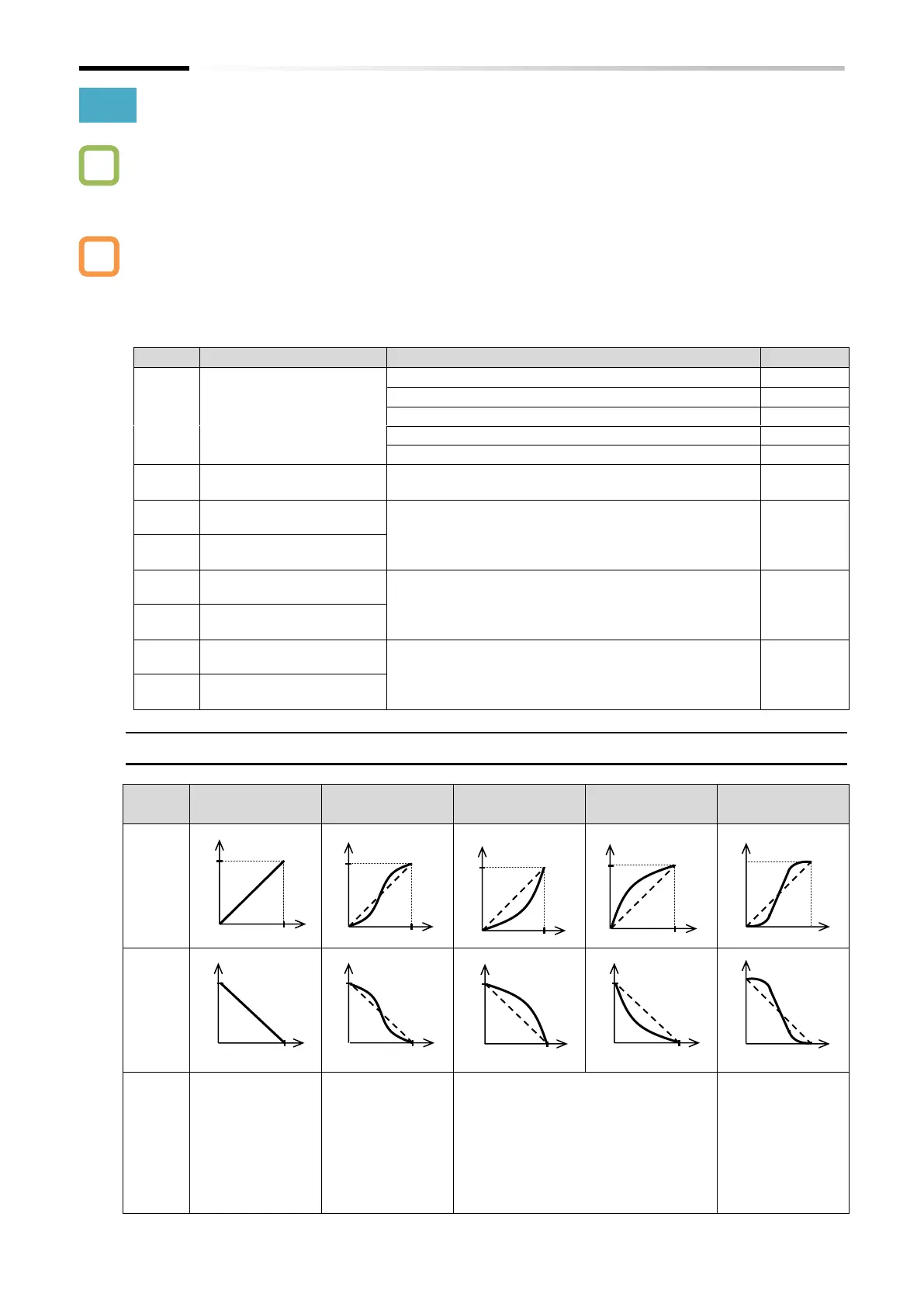